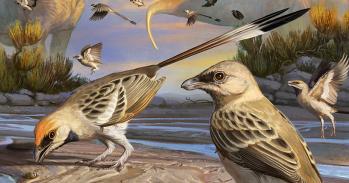
A tiger at Shepreth Wildlife Park recently underwent surgery at the Queen's Veterinary Hospital, Department of Veterinary Medicine in a bid to save her life.
A tiger at Shepreth Wildlife Park recently underwent surgery at the Queen's Veterinary Hospital, Department of Veterinary Medicine in a bid to save her life.
It is obviously not easy to give a tiger tablets!
Jackie Demetriou, lead surgeon
The tigress, who has been at the conservation centre for over ten years, had been unwell for several weeks as keepers and the wildlife park's vets remained baffled as to the cause of her condition.
Amba was booked in for her first ultrasound at the veterinary hospital, but only after extensive paperwork had been completed to allow the Wildlife Park to move the man-eating, yet highly endangered species, off-site. Police were on stand-by in the event of an emergency, alongside the Wildlife Park's own fire-arms team. Extra staff had to be enlisted to lift the substantial weight of not only the largest cat species in the world, but also the specially built steel crate in which she had to be transported.
Safely within the confines of the vet school buildings, blood tests were performed to assess Amba's condition and to test for a fatal feline disease associated with fluid build-up in the abdomen, which had now been diagnosed. Although difficult to perform because of the volume of fluid present, ultrasound examination suggested the possible presence of a mass deep in Amba's abdomen. Amba returned to Shepreth Wildlife Park pending blood results.
Blood results took a few days to be finalised but Amba's condition deteriorated further and her keepers became increasingly more concerned about the future of this iconic individual, who has helped Shepreth Wildlife Park raise more than £20,000 for wild tiger conservation projects.
The results came back as negative and it was decided by the park's vet to drain off the fluid to get a better feel of her abdominal area and add relief to her laboured breathing.
"This was a risky decision, as a traumatic shock to the body like this could have weakened Amba further, and this procedure had to be done in her own tiger den, not under clinical conditions," reveals Rebecca Willers, Animal Manager.
Thirty litres of fluid later, and vet Peter felt sure he could feel the tumour. A very weak and disorientated Amba struggled for the next few days, while Wildlife Park managers made emergency arrangements to book her in at the Cambridge Vet School again, but this time for surgery.
Jackie Demetriou was the lead surgeon for this case. She says that operating on Amba was certainly a challenge, but mainly from a logistical point of view. There were a number of specific issues. Primarily, she needed to ensure that Amba was fully anaesthetised so that there would be no safety issues during her surgery, both for Amba and also for the team.
Jackie said: "The vet and keepers from Shepreth Wildlife Park were excellent and Amba arrived very heavily sedated. We then anaesthetised her and our anaesthetists also gave her an epidural local anaesthetic - just like one frequently given during childbirth - to ensure she was pain-free when she woke up, because it is obviously not easy to give a tiger tablets!
"We then need to get additional images of the abdomen prior to surgery. So we obtained some radiographs (X-rays). We had to borrow a special type of X-ray plate from Addenbrooke's hospital, as we don't use this sort of cassette routinely in veterinary work. We used one of our larger theatre suites where we normally undertake horse surgery, but had both our small animal and equine surgical nurses in the team to ensure every piece and size of equipment required would be easy to hand."
Demetriou continued, "Pleasingly, after getting this far the surgery itself went very well indeed. A tiger's internal anatomy is really the same as a domestic cat's, but bigger. I made a 25cm incision on the underside of her abdomen and was able to identify the mass and remove it relatively easily, before suturing her up with special dissolvable sutures to avoid the need for her to be anaesthetised again just to take the stitches out.
"At this stage we are cautiously optimistic Amba's surgery has been a success and we are very pleased indeed with her progress. Tigers are such magnificent animals and, in light of their endangered nature, operating on Amba was an incredible privilege for all of us and an experience I personally will remember for the rest of my life."
Rebecca Willers, Animal Manager, concludes:"We have been overwhelmed by Amba's speedy recovery. Though she spent her first 24 hours sleeping and we were all concerned that it was touch and go for a while, we were finally thrilled to see her exploring her outside enclosure again earlier this week, and positively seeking food too. Her companion, Rana, has even been leaving her alone at feeding time, usually he would make an attempt to steal her food, but he obviously feels she needs some respite at the moment!"
Though both tigers at Shepreth Wildlife Park are hybrids and not part of the international breeding programme, they have played an instrumental part in educating thousands of visitors to Shepreth each year, about the plight of the tiger and its imminent extinction in the wild.
This work is licensed under a Creative Commons Licence. If you use this content on your site please link back to this page.





